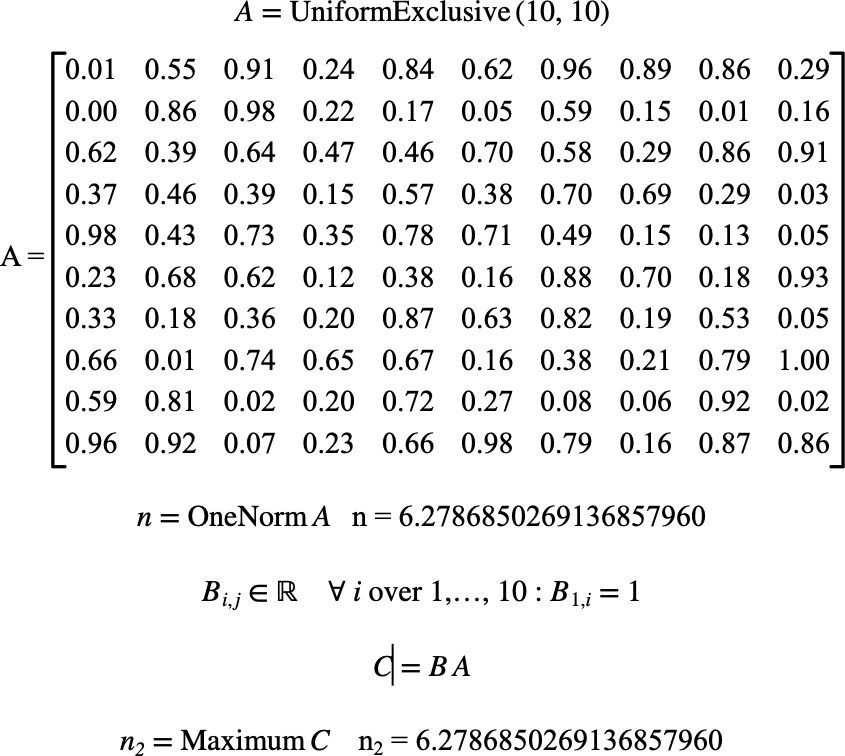\(\text{OneNorm}\)¶
You can use the \(\text{OneNorm}\) to calculate the one-norm of a matrix defined by:
You can use the \onorm backslash command to insert this function.
The following variants of this function are available:
\(\text{real } \text{OneNorm} \left ( \text{<matrix>} \right )\)
Where \(\text{<matrix>}\) is the matrix to calculate the one-norm of.
The function is implemented internally for real and complex matrices. Other matrix types will be converted to real matrices prior to calculating the norm.
The one-norm is calculated by:
\[\text{OneNorm} \left ( M \right ) =
\text{max} \left (
\sum_{r=1}^{ N _ r } \left \vert M _ { r, 1 } \right \vert ,
\sum_{r=1}^{ N _ r } \left \vert M _ { r, 2 } \right \vert ,
\ldots ,
\sum_{r=1}^{ N _ r } \left \vert M _ { r, N _ c } \right \vert
\right )\]
Where \(N _ r\) is the number of rows in matrix \(M\) and \(N _ c\) is the number of columns in matrix \(M\).
Figure 184 shows the basic use of the \(\text{OneNorm}\) function.

Figure 184 Example Use Of The OneNorm Function¶
